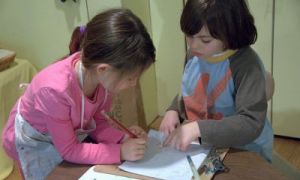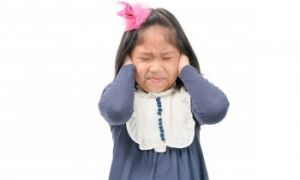

The Quality Areas are central to the National Quality Standard (NQS), which promotes high-quality outcomes for children in early education and care. The following article provides information on an Overview Of Each Quality Area, Connecting Quality Areas To National Law and Regulations, Strategies For Implementing Quality Areas, Tools That Can Assist In Implementing Quality Areas and more.
Quality Area 2 of the National Quality Standard focuses on children's health and safety. This area is to safeguard and promote children’s health and safety, minimise risks, and protect children from harm, injury, and infection. The following article provides a list of critical reflection questions to guide thinking and practice for QA2.
Quality Area 1 of the National Quality Standard focuses on Educational Program and Practice. This area ensures that the educational program and practice are stimulating, engaging, and enhance children's learning and development. The following article provides a list of critical reflection questions to guide thinking and practice for QA1.
The National Quality Standard includes seven quality areas, in each quality area includes standards. These standards are high-level outcome statements. Under each standard are elements that describe the outcomes that contribute to the standard being achieved within the service. The following lists the documentation services that are required to have in order to support the achievement of each quality area from 1 to 7.
Quality ratings for early educational services are determined based on the National Quality Standard (NQS) and are designed to ensure high-quality education and care for children. The following article provides information on the Quality Ratings, the Quality Areas, the Assessment Process, What Happens For Services With A Rating Of Significant Improvement Required, Displaying The Quality Ratings and more.
The aim of Quality Area 1 is to ensure that the educational programs and practices of educators are child-centred, stimulating and maximise opportunities for enhancing and extending each child’s learning and development. In the school-age care context, the aim of this Quality Area is to see that the program nurtures the development of life skills and complements children’s experiences, opportunities and relationships at school, at home and in the community. The following article provides FDC Compliance Responsibilities Of QA1, Documentation Of Assessment, How Compliance Is Monitored, Consequences For Non-Compliance and more.
The National Quality Area Reflection Questions Posters area is to be used as a guide for reflecting on each of the standards within each area. Use the information from these questions to recognize good practise or to change and improve what is not working well. It can also be used as part of a Self-Assessment or Quality Improvement Plan. These can be used as a display within the staff room or put into a folder to assist Educators in reflecting.
Quality Area 7 - Governance and Leadership enables services to achieve the best outcomes for children and their families by creating a service with skilled and engaged workforce, sound administrative and risk management systems, well documented policies and procedures, and a safe and healthy learning environment for children.
 Here is the list of the EYLF Learning Outcomes that you can use as a guide or reference for your documentation and planning. The EYLF… Read More
Here is the list of the EYLF Learning Outcomes that you can use as a guide or reference for your documentation and planning. The EYLF… Read More
 The EYLF is a guide which consists of Principles, Practices and 5 main Learning Outcomes along with each of their sub outcomes, based on identity,… Read More
The EYLF is a guide which consists of Principles, Practices and 5 main Learning Outcomes along with each of their sub outcomes, based on identity,… Read More
 This is a guide on How to Write a Learning Story. It provides information on What Is A Learning Story, Writing A Learning Story, Sample… Read More
This is a guide on How to Write a Learning Story. It provides information on What Is A Learning Story, Writing A Learning Story, Sample… Read More
 One of the most important types of documentation methods that educators needs to be familiar with are “observations”. Observations are crucial for all early childhood… Read More
One of the most important types of documentation methods that educators needs to be familiar with are “observations”. Observations are crucial for all early childhood… Read More
 To support children achieve learning outcomes from the EYLF Framework, the following list gives educators examples of how to promote children's learning in each individual… Read More
To support children achieve learning outcomes from the EYLF Framework, the following list gives educators examples of how to promote children's learning in each individual… Read More
 Reflective practice is learning from everyday situations and issues and concerns that arise which form part of our daily routine while working in an early… Read More
Reflective practice is learning from everyday situations and issues and concerns that arise which form part of our daily routine while working in an early… Read More
 Within Australia, Programming and Planning is reflected and supported by the Early Years Learning Framework. Educators within early childhood settings, use the EYLF to guide… Read More
Within Australia, Programming and Planning is reflected and supported by the Early Years Learning Framework. Educators within early childhood settings, use the EYLF to guide… Read More
 When observing children, it's important that we use a range of different observation methods from running records, learning stories to photographs and work samples. Using… Read More
When observing children, it's important that we use a range of different observation methods from running records, learning stories to photographs and work samples. Using… Read More
 This is a guide for educators on what to observe under each sub learning outcome from the EYLF Framework, when a child is engaged in… Read More
This is a guide for educators on what to observe under each sub learning outcome from the EYLF Framework, when a child is engaged in… Read More
 The Early Years Learning Framework describes the curriculum as “all the interactions, experiences, activities, routines and events, planned and unplanned, that occur in an environment… Read More
The Early Years Learning Framework describes the curriculum as “all the interactions, experiences, activities, routines and events, planned and unplanned, that occur in an environment… Read More

During your child’s preschool years, an important milestone begins to emerge. This is the development...
See more...
It can be difficult for young children to listen to others. On one hand, the...
See more...
Auslan is the sign language of the Australian Deaf community. The following article provides a...
See more...© 2009-2025 Aussie Childcare Network Pty Ltd. All Rights Reserved.
